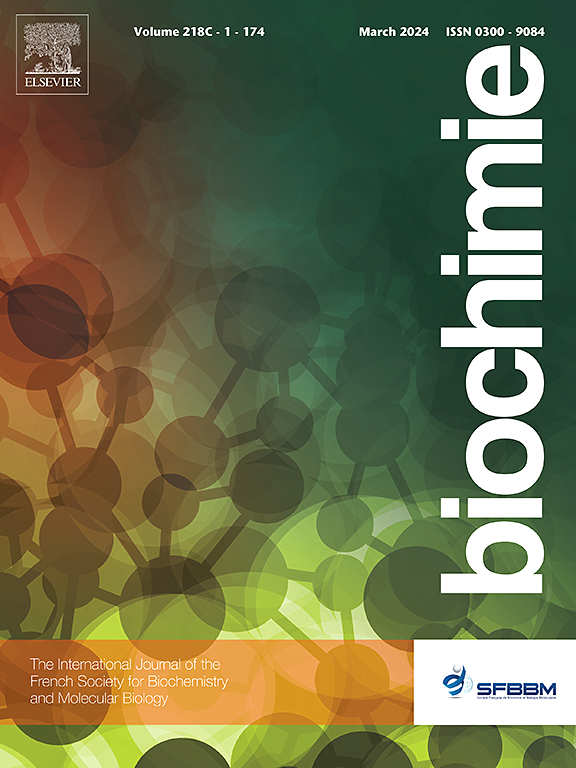Central nervous system pathways targeted by amylin in the regulation of food intake
IF 3
3区 生物学
Q2 BIOCHEMISTRY & MOLECULAR BIOLOGY
引用次数: 0
Abstract
Amylin is a peptide hormone co-released with insulin from pancreatic β-cells during a meal and primarily serves to promote satiation. While the caudal hindbrain was originally implicated as a major site of action in this regard, it is becoming increasingly clear that amylin recruits numerous central nervous system pathways to exert multifaceted effects on food intake. In this Review, we discuss the evidence derived from preclinical studies showing that amylin and the related peptide salmon calcitonin (sCT) directly or indirectly target genetically distinct neurons in the caudal hindbrain (nucleus tractus solitarius and area postrema), rostral hindbrain (lateral parabrachial nucleus), midbrain (lateral dorsal tegmentum and ventral tegmental area) and hypothalamus (arcuate nucleus and parasubthalamic nucleus) via activation of amylin and/or calcitonin receptors. Given that the stable amylin analogue cagrilintide is under clinical development for the treatment of obesity, it is important to determine whether this drug recruits overlapping or distinct central nervous system pathways to that of amylin and sCT with implications for minimising any aversive effects it potentially causes. Such insight will also be important to understand how amylin and sCT analogues synergize with other molecules as part of dual or triple agonist therapies for obesity, especially the glucagon-like peptide 1 receptor (GLP-1R) agonist semaglutide, which has been shown to synergistically lower body weight with cagrilintide (CagriSema) in clinical trials.
淀粉样蛋白调节食物摄入量的中枢神经系统途径。
淀粉样蛋白是一种肽类激素,在进餐时与胰岛β细胞释放的胰岛素共同释放,主要作用是促进饱腹感。虽然后脑尾部最初被认为是这方面的主要作用部位,但现在越来越清楚的是,淀粉样蛋白会通过多种中枢神经系统途径对食物摄入产生多方面的影响。在本综述中,我们将讨论临床前研究中获得的证据,这些证据表明淀粉样蛋白和相关的肽类物质鲑降钙素(sCT)直接或间接地靶向后脑尾部(孤核束和后区)基因独特的神经元、通过激活淀粉样蛋白和/或降钙素受体,直接或间接靶向后脑尾部(孤独束核和后脑区)、中脑(背侧被盖区和腹侧被盖区)和下丘脑(弓状核和次丘脑旁核)中不同基因的神经元。鉴于用于治疗肥胖症的稳定淀粉样蛋白类似物卡格列林肽正在临床开发中,因此确定这种药物是否与淀粉样蛋白和降钙素受体的中枢神经系统通路重叠或不同非常重要。这种认识对于了解淀粉样蛋白和 sCT 类似物如何与其他分子协同作用也很重要,这些分子是治疗肥胖症的双重或三重激动剂疗法的一部分,特别是胰高血糖素样肽 1 受体(GLP-1R)激动剂 semaglutide,在临床试验中,该药物已被证明能与卡格列林肽(CagriSema)协同降低体重。
本文章由计算机程序翻译,如有差异,请以英文原文为准。
求助全文
约1分钟内获得全文
求助全文
来源期刊

Biochimie
生物-生化与分子生物学
CiteScore
7.20
自引率
2.60%
发文量
219
审稿时长
40 days
期刊介绍:
Biochimie publishes original research articles, short communications, review articles, graphical reviews, mini-reviews, and hypotheses in the broad areas of biology, including biochemistry, enzymology, molecular and cell biology, metabolic regulation, genetics, immunology, microbiology, structural biology, genomics, proteomics, and molecular mechanisms of disease. Biochimie publishes exclusively in English.
Articles are subject to peer review, and must satisfy the requirements of originality, high scientific integrity and general interest to a broad range of readers. Submissions that are judged to be of sound scientific and technical quality but do not fully satisfy the requirements for publication in Biochimie may benefit from a transfer service to a more suitable journal within the same subject area.
 求助内容:
求助内容: 应助结果提醒方式:
应助结果提醒方式:


